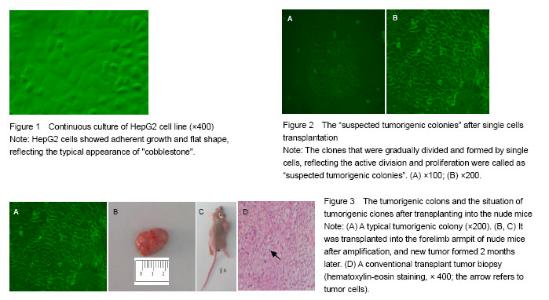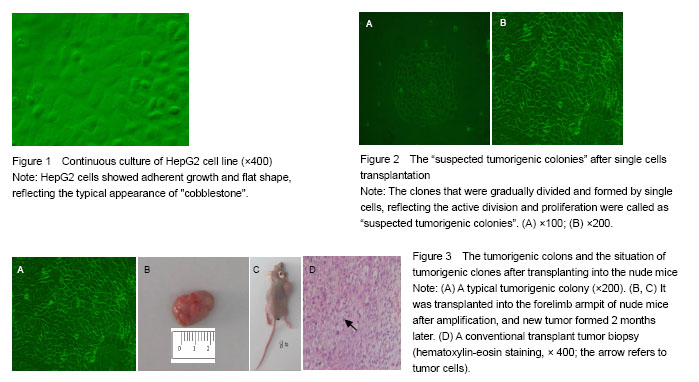| [1] Reya T, Morrison SJ, Clarke MF, et al. Stem cells, cancer, and cancer stem cells. Nature. 2001;414(6859):105-111.[2] Pardal R, Clarke MF, Morrison SJ. Applying the principles of stem-cell biology to cancer. Nat Rev Cancer. 2003;3(12): 895-902.[3] Lingala S, Cui YY, Chen X, et al. Immunohistochemical staining of cancer stem cell markers in hepatocellular carcinoma. Exp Mol Pathol. 2010;89(1):27-35. [4] Kim CF, Jackson EL, Woolfenden AE, et al. Identification of bronchioalveolar stem cells in normal lung and lung cancer. Cell. 2005;121(6):823-835.[5] Chiba T, Kita K, Zheng YW, et al. Side population purified from hepatocellular carcinoma cells harbors cancer stem cell-like properties. Hepatology. 2006;44(1):240-251.[6] Ma S, Chan KW, Hu L, et al. Identification and characterization of tumorigenic liver cancer stem/progenitor cells. Gastroenterology. 2007;132(7):2542-2556. [7] Yin S, Li J, Hu C, et al. CD133 positive hepatocellular carcinoma cells possess high capacity for tumorigenicity. Int J Cancer. 2007;120(7):1444-1450.[8] Clarke MF, Dick JE, Dirks PB, et al. Cancer stem cells--perspectives on current status and future directions: AACR Workshop on cancer stem cells. Cancer Res. 2006; 66(19):9339-9344.[9] Kelly PN, Dakic A, Adams JM, et al. Tumor growth need not be driven by rare cancer stem cells. Science. 2007;317 (5836):337.[10] Quintana E, Shackleton M, Sabel MS, et al. Efficient tumour formation by single human melanoma cells. Nature. 2008;456(7222):593-598. [11] Eaves CJ. Cancer stem cells: Here, there, everywhere? Nature. 2008;456(7222):581-582.[12] Baker M. Melanoma in mice casts doubt on scarcity of cancer stem cells. Nature. 2008;456(7222):553. [13] Fearon ER, Vogelstein B. A genetic model for colorectal tumorigenesis. Cell. 1990;61(5):759-767.[14] Rosen JM, Jordan CT. The increasing complexity of the cancer stem cell paradigm. Science. 2009;324(5935): 1670-1673. [15] Wu CQ. Preliminary isolation and identity of cancer stem cells in four tumor cell lines. Kunming: Kunming University of Science and Technology, 2011.[16] Wei HJ. Roles of pancreatic adenocarcinoma cells with tumor stem cell property in invasion and metastasis. Huazhong: Huazhong University of Science and Technology, 2011.[17] Dick JE. Looking ahead in cancer stem cell research. Nat Biotechnol. 2009;27(1):44-46.[18] Situ ZQ. Cell Culture & Cell Clone Technology. Beijing: Beijing World Publishing Corporation, 2006:249-252.[19] Ware JH, Zhou Z, Guan J, et al. Establishment of human cancer cell clones with different characteristics: a model for screening chemopreventive agents. Anticancer Res. 2007; 27(1A):1-16. |

